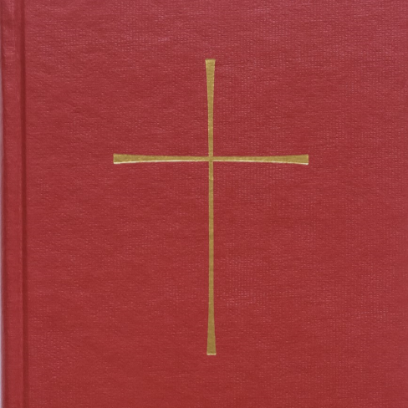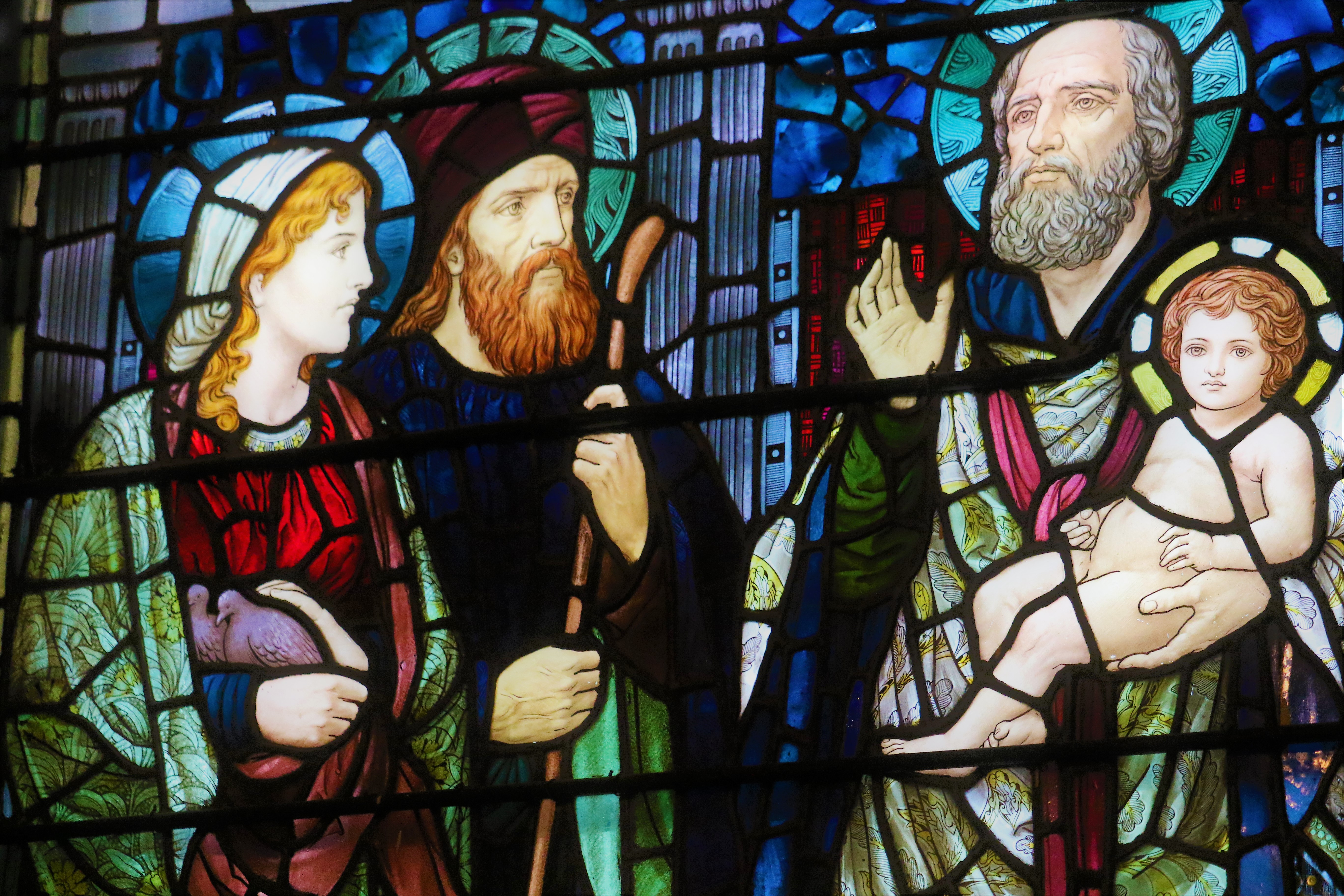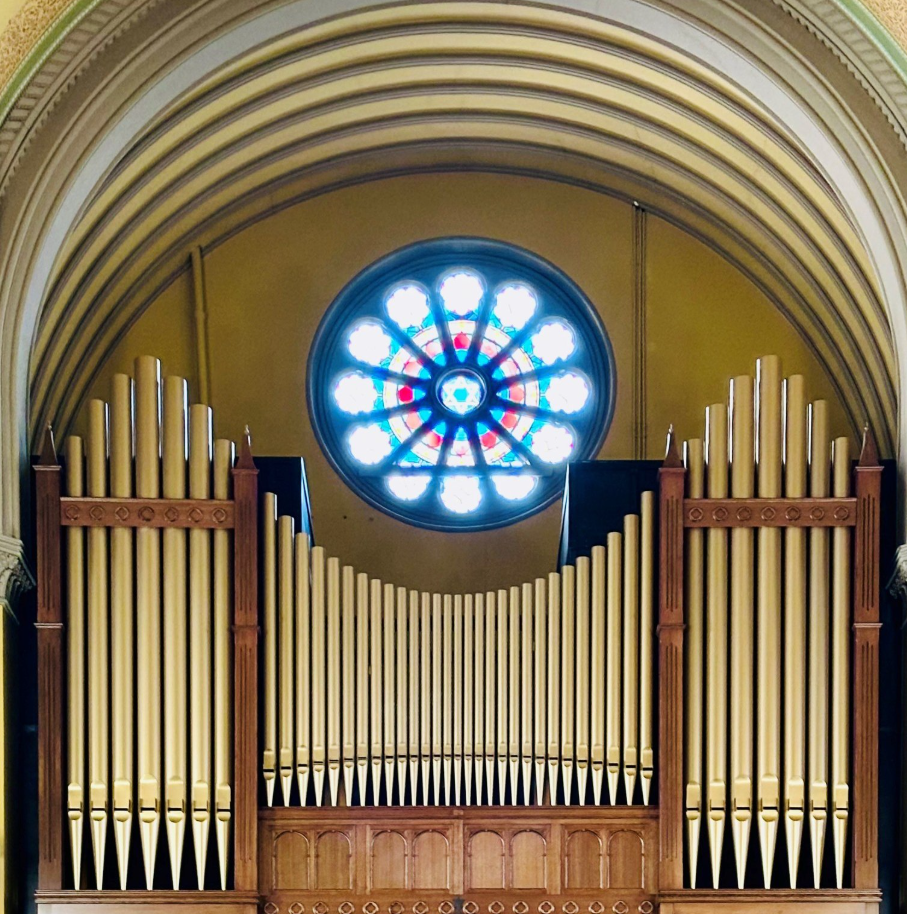It is a joy to welcome Richard Spotts as our guest organist for our August 31 Service, the 12th Sunday after Pentecost, while our Music Director Ben Leiby is away. Mr. Spotts recently published a book on Charles Tournemire’s “L’Orgue Mystique” and provided some notes on the prelude and postlude.
The Gospel pericope from Saint Luke xiv centers upon the adjuration, “Whosoever exalteth himself shall be abased; and he that humbleth himself shall be exalted.” The organ music, therefore, will be expanding upon this theme.
We will begin with “Dominica Decima post Pentecosten” from “L’Orgue Mystique” by Charles Tournemire (1870–1939). “L’Orgue Mystique” is a two-hundred-fifty-three-movement work celebrating fifty-one Masses throughout the liturgical calendar. This Office, which is for the Tenth Sunday after Pentecost in the old calendar, deals with the parable of the Pharisee and the Publican (Saint Luke xviij)—a passage that concludes with the corresponding admonishment: “For every one that exalteth himself shall be abased; and he that humbleth himself shall be exalted.”
The chants associated with this day are petitions taken from the perspective of the Publican, who feels himself to be abased, while also being fearful of his vulnerable position in society: Prélude à l’introït: “When I called upon the Lord, he heard my voice; Even from the battle that was against me. Yea, even God that endureth for ever shall hear me and bring them down: O cast thy burden upon the Lord, and he shall nourish thee. Hear my prayer, O Lord, and hide not thyself from my petition: Take heed unto me, and hear me.” (Psalm liv/lv); Offertoire: “Unto thee, O Lord, will I lift up my soul: my God, I have put my trust in thee, O let me not be confounded: neither let mine enemies triumph over me: for all they that hope in thee shall not be shamed.” (Psalm xxiv/xxv); Élévation: “And the Publican, standing afar off, would not lift up so much as his eyes unto heaven, but smote upon his breast, saying, God be merciful to me a sinner.” (Saint Luke xviij); Communion: “Thou shalt be pleased with the sacrifice of righteousness, with the burnt offerings and oblations upon thine altar, O Lord.” (Psalm l/lj)
The final movement of this Office (“Choral nº I”) is based off of the Gradual “Custodi me, Domine”: “Keep me, O Lord, as the apple of an eye: Hide me under the shadow of thy wings. Let my sentence come forth from thy presence: And let thine eyes look upon the thing that is equal.” (Psalm xvj/xvij) “The apple of one’s eye” has come to mean something or someone that one cherishes above all others, but the word “apple” is thought to be a corrupted translation of the Hebrew word referring to the aperture at the centre of the human eye (id est, the pupil) or the eye itself. Therefore, the expression might be a bidding prayer petitioning God to view the world through our human experiences and to shelter us all from the dangers of the world, and to judge us with equity despite our unequal statuses in society.
We conclude the service with “Sonata nº III” by Felix Mendelssohn (1809–1847). In 1844, the English publishers Coventry and Hollier commissioned Felix Mendelssohn Bartholdy (1809–1847) to write “a set of voluntaries”, which were to be published a year later. These six works, which Mendelssohn would term “sonatas”, often reference Lutheran chorales. The third sonata, however, has an earlier origination. At least the opening and closing processional portions of the first movement were composed for the wedding of his sister, Fanny Mendelssohn (1805–1847)—who was an accomplished composer in her own right—to the painter Wilhelm Hensel (1794–1861) on the third of October 1829.
The sonata we know today includes the chorale “Aus tiefer Noth schrei ich zu dir”—“Out of the depths I cry to thee”. The chorale itself was composed by Martin Luther somewhere around 1523 and 1524 and was the first hymn where Luther wrote both the poem and melody. Based upon Psalm cxxx, “De Profundis”, he termed it “a psalm of redemption”. The Phrygian mode employed in this chorale and the “serious nature” of its subject matter, which Mendelssohn expounds upon in using a brilliant double fugue, are in sharp contrast to the joyance of the homophonic processional beginning and conclusion.
The apposition of “joyance” and “profundus” is again challenged by the sonata’s second and concluding movement. This curiously intimate and petite postscript, which—although defying musical expectations for a grand finalé—hearkens to Mendelssohn’s famed melodic genius as heard in such vocal solos as “O rest in the Lord”, draws the piece to a lyrical, dolce finis. This conjoinment of “joyance”, “profundus”, and “intimacy”—all of which are grounded in theological notions of truth—expresses the Romantic vision of reality and the human experience within that framework.

Richard Spotts is a graduate of Westminster Choir College in Princeton. Over the past sixteen years, Richard dedicated himself to the study of Charles Tournemire and his "L’Orgue Mystique", during which he performed segments of the work—both liturgically and in concert—at cathedrals, parishes, universities, and other such institutions in the United States and Canada. He has performed the complete "L’Orgue Mystique" in concert series, most notably in Pittsburgh for the Pittsburgh and Duquesne chapters of the American Guild of Organists and Duquesne University. The performance for the Philadelphia Chapter of the American Guild of Organists, which was interrupted due to the pandemic, is rescheduled for Lent 2026 at Saint Paul’s Episcopal Church, Chestnut Hill. Mr Spotts’ book on the subject—"Charles Tournemire’s L’Orgue Mystique: La haute mission", which is a summation of his study of the man and his music—is set to be published by the Leupold Foundation in the coming months.
Recent Posts





